Adaptiv has released their new automotive TPX laser jamming system. It takes their motorcycle-specific laser jammer and makes some changes specifically for larger cars and trucks. It is a fairly simple jammer, feature-wise, but it seems to work pretty well and should be a contender for those looking to purchase a relatively affordable laser jamming system.
It is available for preorder now and will begin shipping in mid-October. (Save $100 off preorders and an additional 10% off using the coupon code “Vortex”)
I’ve had a chance to beta test a unit and so let’s go ahead and take a closer look at it.
Overview
The laser jammer system comes with a CPU, power cable, USB extension cable, wired controller (with integrated speaker), and 3 heads by default, along with the user manual. Two additional heads for rear protection are optional.
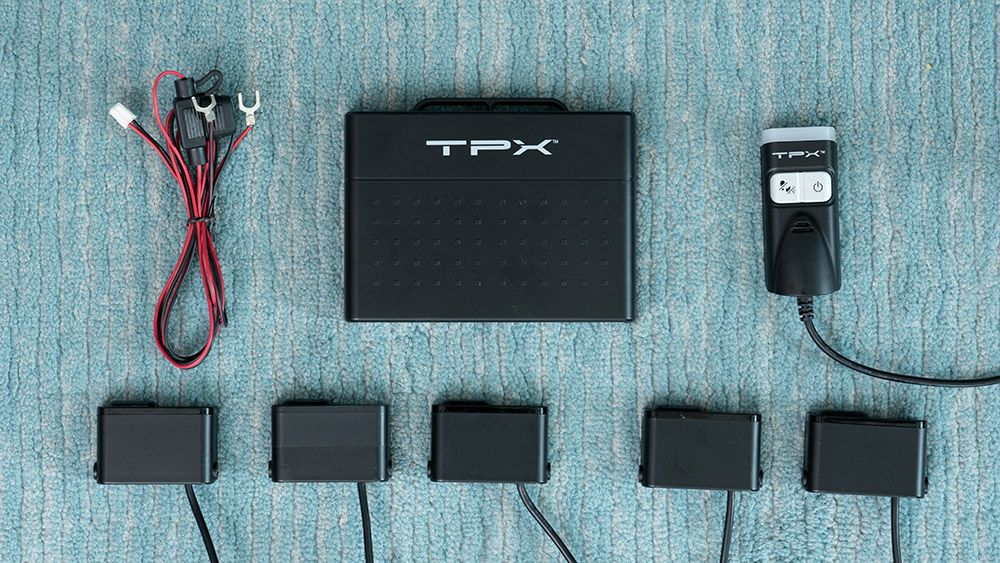
Like some other systems, you’ll have two regular heads by the headlights and a third “CM” head (sorta similar to TX/VPR) that’s more powerful and specifically designed to help combat tougher DragonEye guns.
The system is priced competitively and will retail at launch for $950 for a set of triples for front protection. Additional rear heads will be $210 each. If you’d like to preorder, you can save $100 off the system, bringing you down to $850.
Additionally you can also use the coupon code “Vortex” to save a further 10% off the discounted preorder price.
CPU
Taking a closer look at the CPU itself, it’s very similar to the motorcycle jammer. You’ve got ports for power, up to 5 heads, a USB port for updates, and the wired control switch.
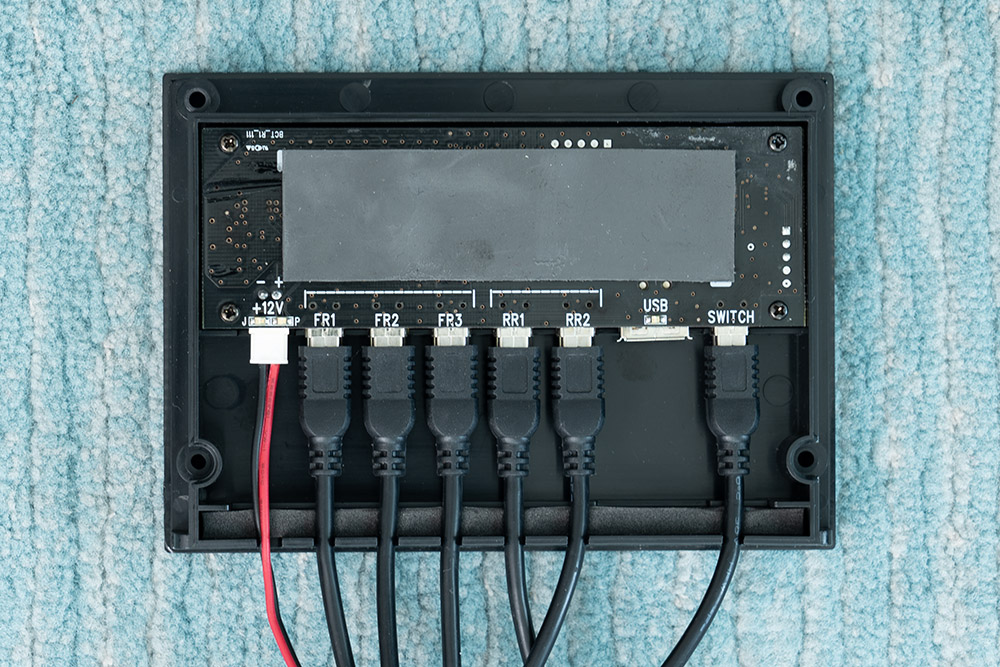
Adaptiv TPX Auto Jammer, CPU Internals
The motorcycle system was very similar, but it only supported a max of 3 heads. Adaptiv has removed the audio jack to plug in your helmet and the visual external alert LED that you mount on your bike and instead added two more laser jammer ports since cars and trucks need more heads to cover their larger surface area.
Here’s a look at the internals of the motorcycle jammer CPU for comparison:
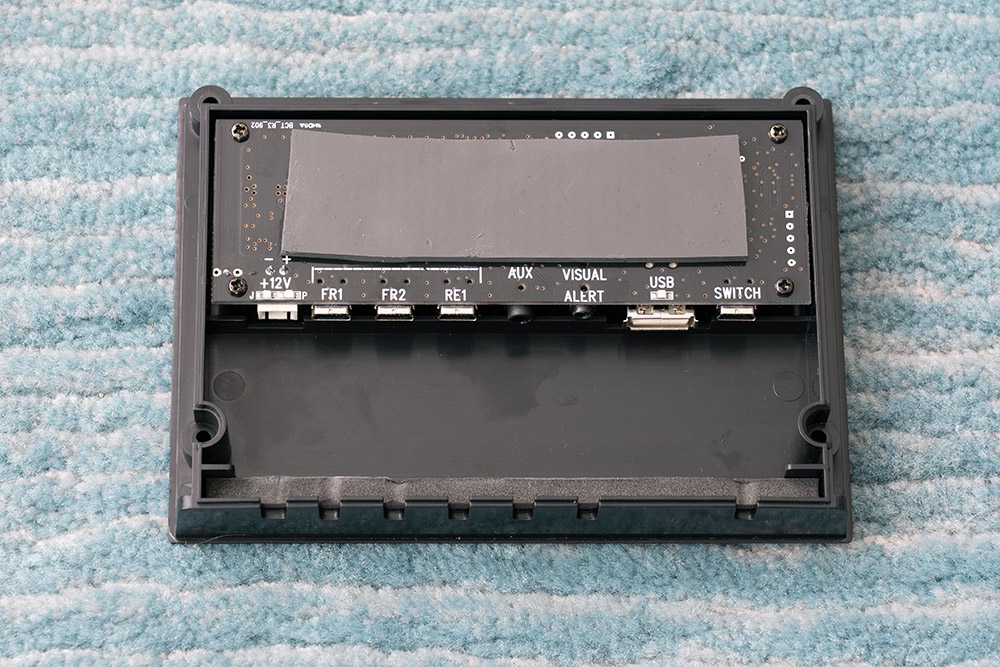
Adaptiv TPX Motorcycle Jammer, CPU Internals
Give the CPU’s waterproof construction, you can install the system tucked under your dash like most other laser jammers, or you can install in your engine bay if you prefer. If you have an ignition triggered power source under your hood, that can be a nice way to reduce how many cables need to be run through your vehicle’s firewall since the individual head cables would all be contained within your engine bay.
Heads
The laser jammer heads are sized and shaped similarly to the competition. Here’s a TPX head temporarily installed underneath one of my rear ALP heads for testing purposes.
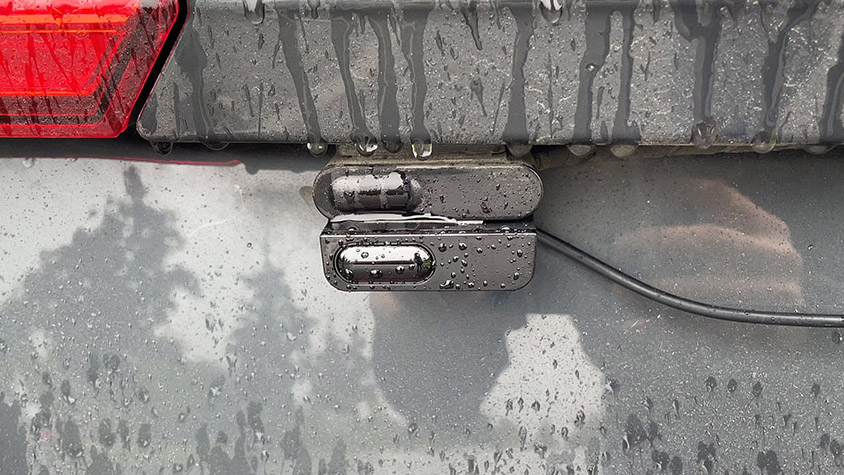
ALP head (top) and TPX head (bottom)
The more powerful CM head for the front looks like the regular heads, but it has two transmit diodes instead of just one like the regular heads. Additionally, unlike ALP’s TX head and TMG’s VPR head, it still includes receive capabilities. This is very helpful for larger vehicles because it adds increased detection and receive coverage.
Control Switch
The only thing you’ll visibily install in your cabin will be the system’s wired control switch. It has two buttons to let you control the system, a status LED on top that flashes when you get hit with laser, and a built-in speaker that alerts you when you get shot.
Functionally the control switch is fairly simple.
The volume button on the left controls volume levels and muting.
The power button on the right turns the system on and off, lets you switch between 3-sec auto kill for driving or unlimited jamming for testing, and lets you switch between parking sensor mode and laser jamming functionality. (There currently is no option to adjust the 3-sec AutoJTK timer. Also you can’t manual JTK with either button.)
The LED on top is solid red when the system is powered on and armed. It blinks red during an alert. When the system is set to parking sensor mode, the LED is blue.
Alerts
By default when you get shot, the system will jam for 3 seconds and then automatically disarm.
For testing purposes we temporarily switched it to unlimited jamming. Here’s a quick demo of the alerts so you can see and hear how it behaves.
You’ll note that you get a continuous beeping alarm when hit with laser. There is no voice announcement to identify the laser gun or tell you if the officer is tagging you from the front or rear.
The LED is normally solid (it looks like it’s slowly blinking on camera) and then when you get hit, it begins blinking rapidly.
I also noticed that the system makes it pretty clear when the officer stops targeting you. Here’s a clip testing the DragonEye Compact targeting my front end and you’ll see the system stop alarming every time @DC Fluid stops shooting and tells me the punch through distances over the phone, then it resumes alerting as he resumes shooting.
In these two videos testing with beta firmware, you’ll see the TPX go JFG against the TSS and then jam for quite a while against the DETC, only getting PT’s at close range which is pretty good.
Test Results
Next, let’s look at test results since this is very important.
I’ve had a chance to test the system, but all my testing was done with pre-production firmware which has since been changed and improved upon and so it wouldn’t be reflective of current performance with retail firmware. I haven’t had a chance to retest with production firmware.
Fortunately @thebravo and @venom690 did some testing as well, but with production firmware. You can check out their full test results here. (Their test results were similar to mine, but a bit better, presumably because of the updated firmware.)
Up front w/ the 3 heads, their system did well against both older gen guns and DragonEyes. It went JTG against the TSSxB, TruSpeed, ProLite +, PL3 , and Stalker XLR. It even jammed DragonEyes down to 200-400′, including some JTG runs depending on the install. Overall solid performance and great protection.
The rears, with just 2 heads, struggled a bit more. On one car it was basically JFG against non-DE guns. On the other car it was also JFG against the ProLite+ and TruSpeed too, but they saw occasional PT’s in the 300-500′ range with the TSSxB, XLR, and even PL3 which is a bit surprising. Against the DE’s though, it was pretty common to get PT’s, even multiple PT’s out to about 1200′ or so.
So results may vary, as usual, depending on your install. Nevertheless, the 3 heads up front did pretty well overall. The rears fared worse given just the 2 heads, but could still do the job against non-DE guns. For most of us here who see primarily front laser, it would do the job. If you have a lot of rear DragonEye, such as Edmonton drivers, this wouldn’t be a suitable jammer.
Firmware Updates
Firmware updates with the system are pretty straightforward. You can download the latest firmware from Adaptiv’s website, copy the file over to a USB drive, and plug the drive into your CPU.
Here’s a video show the process with the motorcycle version of the jammer. The process is the same for this auto version too.
Compared to the Competition
How does the TPX jammer compare to the competition? Well it’s designed to be a simple, effective, and relatively inexpensive option for people who don’t need a bunch of bells and whistles.
It’s a good bit cheaper than the ALP and even a little cheaper than the TMG. Here’s how they compare with full retail US pricing:

Adaptiv is offering $100 off for preorders, $20 off each head, and discount codes. TMG also temporarily discounted the price on triples and has a coupon code you can use too. Here’s how pricing compares after all the discounts:

ALP vs. Adaptiv TPX
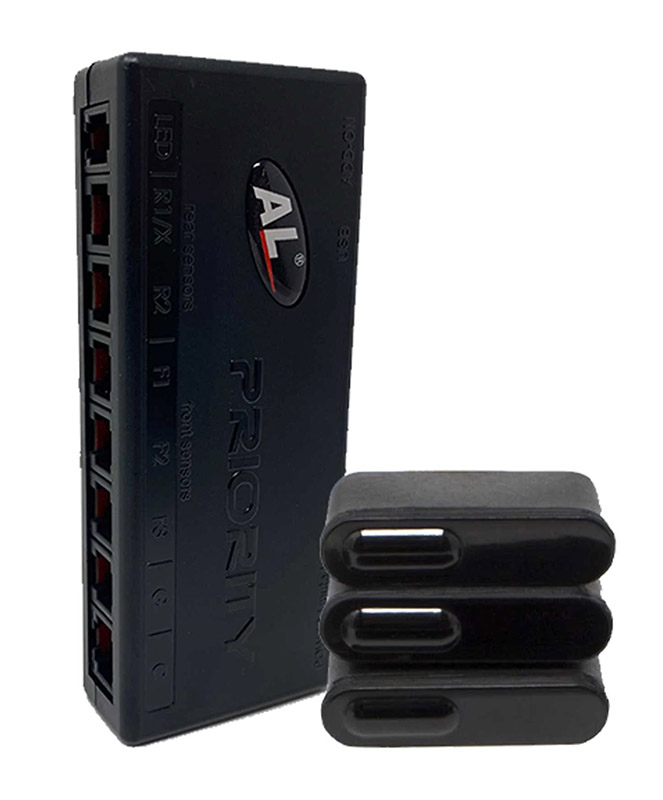 The AntiLaser Priority is still the king. It jams better, has frequent updates, supports more heads for better coverage front and rear, has additional features like Bluetooth and a dedicated speaker, offers firmware updates via USB or the phone, voice announcements, laser gun ID’s, and more. So no, the TPX isn’t better than the ALP.
The AntiLaser Priority is still the king. It jams better, has frequent updates, supports more heads for better coverage front and rear, has additional features like Bluetooth and a dedicated speaker, offers firmware updates via USB or the phone, voice announcements, laser gun ID’s, and more. So no, the TPX isn’t better than the ALP.
However, if you’re looking for a more affordable option, the TPX can still keep you protected for over $600 less than a standard front only ALP triple w/ Tx and over $1,500 off a fully loaded front/rear ALP. (It’s not an apples to apples comparison given that the ALP has a 3rd head in the rear, Bluetooth, and more, but still you get the idea. Retail pricing after launch will be slightly less of a difference, but still an advantage for the TPX.)
TMG vs. Adaptiv TPX
IMPORTANT UPDATE: The American TMG distributor is no longer with the company. Sales and customer service are both unavailable until TMG finds another distributor and so TMG’s discounted pricing no longer applies.
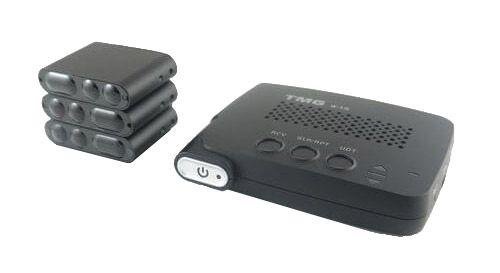 I think the TMG is the best and most direct competitor to the TPX. It’s priced in the same ballpark, but for preorder, a fully loaded TPX is about $300 less than a fully loaded TMG. That said, the TMG offers an additional rear VPR head for improved rear protection, not to mention it’s more feature-rich adding Bluetooth with JBV1 integration, firmware updates over the phone, gun ID’s, voice announcements, visual and audible directional indicators, it comes with a free laser tester, etc.
I think the TMG is the best and most direct competitor to the TPX. It’s priced in the same ballpark, but for preorder, a fully loaded TPX is about $300 less than a fully loaded TMG. That said, the TMG offers an additional rear VPR head for improved rear protection, not to mention it’s more feature-rich adding Bluetooth with JBV1 integration, firmware updates over the phone, gun ID’s, voice announcements, visual and audible directional indicators, it comes with a free laser tester, etc.
With the TPX, I like the external remote and speaker which means you can tuck the CPU out of sight somewhere and rely solely on the compact remote, unlike the more integrated TMG where you’ll want the CPU close by to both press buttons as needed and to not muffle the speaker’s audio behind body panels.
The biggest issue for the TMG though has been its reliability issues, and for that reason I don’t fully feel comfortable recommending it anymore. I’ve written a TMG article to help you be aware of and work around the TMG’s issues, but seeing many people (myself included) experience the system go down without warning by appearing to boot and function normally, but it doesn’t detect or jam laser, this means you have no protection and a false sense of security. That’s really shaken my confidence and trustworthiness in the TMG. While the TPX, like the TMG, also doesn’t warn the user if a head gets unplugged (ALP does), so far with the motorcycle variant at least, the system seems to be more reliable and trustworthy which I think is a big deal. Who cares about the TMG’s features if the system stops working without warning, you know?
If you’d like the TMG for the added features, you can order it here and use the coupon code “VortexRadar” to save $70 off triples, quads, or more.
Note: In response to the TPX launch, TMG has temporarily reduced their pricing on triples by $50. That pricing is reflected in the chart above.
My Thoughts on the TPX
The TPX is a pretty simple system. Install the heads on your vehicle, connect the CPU to power, tuck the CPU away somewhere, put the control switch somewhere convenient, run a USB extension cable for firmware updates somewhere accessible, and set the volume for an appropriate level. That’s about it.
When you get shot with laser, you’ll have 3 seconds to slow down which is generally sufficient to get on the brakes and take action. Protection is pretty good up front and alright for the rear. For most drivers in the US, it should offer sufficient coverage in most situations. If you face a lot of DragonEye, particularly in the rear, I think you should consider a different system.
I would love to see some additional capabilities such as an adjustable AutoJTK timer, audio announcements including a gun ID and directional indications, firmware updates over Bluetooth, and an option for a rear CM head for small group of people who face rear DragonEye (primarily Canadians), but for those looking for a simple and less-expensive alternative to the ALP, we’re fortunate to have another viable option now.
How to Preorder
The Adaptiv TPX Automotive Jammer is now available for preorder and units should begin shipping mid-October.
The systems will retail for $950 for triples and $210 for each additional rear head. If you’d like to preorder, you can get the system for $100 off, or $850.
To preorder, you put down a $100 deposit now and pay the remaining $750 (for front protection) when the system ships.
If you use the coupon code “Vortex,” you’ll save 10% off which drops you down to $90 for the deposit and $675 when it ships.
So you’re looking at just $765 total for front protection w/ 3 heads or $1,125 for front/rear coverage w/ 5 heads.
Preorder the Adaptiv TPX Automotive laser jammer here.
| This website contains affiliate links and I sometimes make commissions on purchases. All opinions are my own. I don’t do paid or sponsored reviews. Click here to read my affiliate disclosure. |

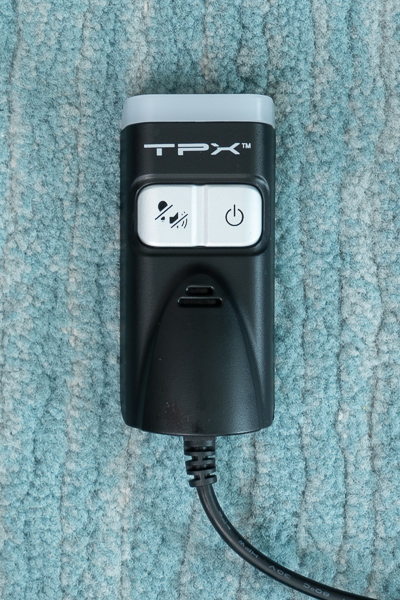

3 comments
Does the installation require drilling any holes and how complex is it?
Any plans to re-test now that CM heads are available for the rear?
Author
Eventually I’ll do a big retest. I’m still waiting on the new Stinger jammers and the new Escort jammers. I’ve got the TMG A-17’s on hand and those will be in the mix too.